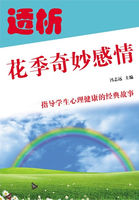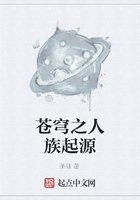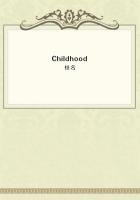A.shared the jokes with com puterm ajorsB.earned as much as com puter m ajorsC.found jobsm ore easily than com puter m ajorsD.stopped joking about com puter majors73.Com pared w ith graduates of other subjects,social science graduates.
A.are ready to change when situations changeB.are better able to deal w ith difficultiesC.are equally good at com puter skillsD.are likely to give others pressure74. T he underlined word “land”in the last paragraph probablym eans.
A.keep for some time B.successfully getC.im mediately start D.lose regretfully75.According to the text,what has made it easy for social sciencegraduates to find jobs?
A.Willingness to take low ‐paid jobs.
B.Readiness to gain high‐tech know ledge.
C.Skills in expressing them selves.
D.Part‐time work experience.
As any hom em aker who has tried to keep order at the dinner tableknows,there is far more toa fam ily meal than food.Sociologist MichaelL ew is has been studying 50fam ilies to find out just how m uch m ore.
Lew is and his co‐workers carried out their study by videotaping (录像) the fam ilies while they ate ordinary meals in their own hom es. heyfound that parents w ith sm all fam ilies talk actively w ith each other andtheir children.B ut as the num ber of children gets larger,conversationgives w ay to the parents’ efforts to control the loud noise they m ake.T hat can have an im portant effect on the children.“In general them orequestion‐asking the parents do, the higher the children’ sIQ scores,”
Lew is says.“And the more children there are,the less question‐askingthere is.”
The study also provides an explanation for why m iddle children oftenseem to have a harder tim e in life than their siblings (兄弟姐妹).
Lew is found thatin fam ilies with three or four children,dinner conversationis likely to center on the oldest child, who has the most to talkabout,and the youngest,who needs the m ost attention.“Middle childrenare invisible,”says Lew is.“When you see som eone get up from thetable and walk around during dinner,chances are it’sthe m iddle child.”
There is,how ever,one thing that stops all conversation and preventsanyone from having attention :“When the TV is on,”Lew is says,“dinneris anon‐event.”
66.The writer’spurpose in writing the text is to.
A.show the relationship betw een parents and children
B.teach parents ways to keep order at the dinner table
C.report on the findings of astudy
D.give inform ation about fam ily problems
67.Parents with large fam ilies ask few er questions at dinner because.
A.they are busy serving food to their children
B.they are busy keeping order at the dinner table
C.they have to pay m ore attention to younger children
D.they are tired out having prepared food for the whole fam ily
68.By saying“Middle children are invisible”in paragraph3,Lew ism eans that m iddle children.
A.have to help their parents to serve dinner
B.get the least attention from the fam ily
C.are often kept aw ay from the dinner tabl
D.find it hard to keep up w ith other children
69.L ew is’research provides an answ er to the question.
A.why TV is im portant in fam ily life
B.why parents should keep good order
C.why children in sm all fam ilies seem to be quieter
D.why m iddle children seem to have m ore difficulties in life
70.Which of the follow ing statem ents would the w riter agree to?
A.Itis im portant to have the right food for children.
B.Itis agood idea to have the TV on during dinner.
C.Parents should talk to each of their children frequently.
D.Elder children should help the younger ones at dinner.
(浙江省严州中学(新) 赖朝晖)
点评
科技英语的读写一直困扰着高中英语教学。本设计案例是一次有益的尝试。设计者在设计中抽取了英语读写教学的普遍性,并与科学研究初步的读写教学的特殊性相结合。以读带写,以写促读,两者相辅相成,相得益彰。教学过程设计从复习导入新课入手,语言技能和主题知识由浅入深不断递进,阅读理解和写作的技巧和方法由简到难依次提升,足见设计者的匠心。但本设计首先对学生科技阅读中的困难估计不足。对中学生而言,科技阅读造成的困难主要表现在两个方面,即科技词汇习得的困难和科技理论获取的困难。科技阅读是从文字符号中了解现象,提取事实,提炼规律,建构个体意义、信念和思想的过程。也就是说,科技英语阅读是借助于文字将具体事件不断抽象化或概念化的过程。这足见其阅读过程的困难。其次,科技英语写作是将主题知识转化为句子,也就是说,学生将科学概念和思想具体化为句子的过程,其难度是可想而知的。
十一、My Favo rite Season Part BLet’slearn &; Group work&;Let’stry
一、教学设计思路
本设计思路以季节为主线贯穿始终,围绕学生喜爱的季节和相应的活动,设计了一系列丰富而又有现实意义的教学活动。充分考虑采用T P R 教学法,让学生唱唱、听听、说说、画画、演演,不断激发学习的兴趣和热情。同时,在教学过程中,注意培养学生的记忆、观察和思维能力,让学生在各种快乐的活动过程中不知不觉回顾、学习及巩固语言知识,发展语言技能。
二、前期分析
本教学设计的教学内容是PEPB ook 6U nit 2My Favorite Season中的Part BL et’slearn&;Group work&;Let’stry。涉及sw im、skate、fly kites、make asnow man、plant trees 等五个四会单词和词组,要求学生运用句型I can...说出自己喜欢的某个季节的一些活动及互相交流自己喜欢的活动。
教学对象为小学五年级学生。在经过前两年的学习之后,绝大部分学生对英语学习依旧持浓厚兴趣。他们已掌握初步的英语知识,对英语的学习已形成一定的感性认识,已养成较好的学习习惯。大多数学生乐于参与各种英语学习活动,已树立学好英语的信心,敢于用英语进行表达。能在小组活动中积极与他人合作,相互帮助,共同完成学习任务,并在学习英语中体会到成功的乐趣。
教学重点:
听、说、读、写:swim、skate、fly kites、make asnow man、plant trees。
用I can...说出自己喜欢的某个季节的一些活动。
教学难点:
四会掌握这五个单词和词组。
三、教学目标
【知识与技能】
1.能够听、说、读、写单词和词组:swim、skate、fly kites、make asnow man、plant trees。
2.能够使用句型I can...说出自己喜欢的某个季节的一些活动。
【过程与方法】
通过一系列任务活动,学生能在主动思维、自主探究、交流合作中学习,能互相交流自己喜欢的活动。
【情感、态度与价值观】
学生能关注季节、热爱生活,有学习兴趣和合作的团队精神。
四、教学准备
多媒体课件、图片、磁带、录音机、小组调查表、绘画用纸五、教学过程设计
【热身练习】
(1)唱一首英语歌。
(2)师生问候。
【复习和导入】
(1)复习四季的名称。
(2)复习有关动作短语的chant。
该教学步骤旨在巩固已学四季名称和动作短语,为本课后阶段的综合运用新旧知识做好铺垫。
【新课】
1.单词和词组的学习
(1)春天的活动
设问:Spring is com ing.Whatcan we do in spring?请学生以做动作的形式来给出春天的活动,接着教师课件出示孩子们放风筝的画面和植树的画面,学生学说“fly kites”和“plant trees”。
a.跟读b.反馈检查c.同桌练习。
(2)夏天的活动
课件出示一男孩在游泳的画面。
Look!He's sw im m ing.学生学说“swim ”。
a.跟读;b.反馈检查;c.同桌练习。
(3)冬天的活动
设问:What can we do in w inter?请学生动作表演冬天进行的活动。
然后课件出示一男孩滑雪的画面和一女孩在雪地上堆雪人的画面,学生学说“skate”和“ma kea snowman”。
a.跟读;b.反馈检查;c.同桌练习。
“自主”就是要让学生真正成为教学的主体,让学生积极能动地参与教学活动,积极主动地进行学习认识和学习实践活动。请学生以动作表演的形式来引出在四季进行的活动,既为学生创造了自主思维的空间,使学生思考每个季节适合进行的活动,又使学生在动作表演的过程中满足活泼好动、参与表现的需要。
2.新授词的巩固
(1)小先生制
教师请发音掌握较好的学生来作小先生领读,让其余学生跟读。
(2)高低声的练习
教师高声说新授词,学生低声说;教师低声说,学生高声说。
(3)看口型猜词
教师说词(不发声),学生看教师口型猜词。
(4)看动作说英语
教师做动作,请学生说出相应的英语。然后请学生在同桌间、四人小组内进行练习。














